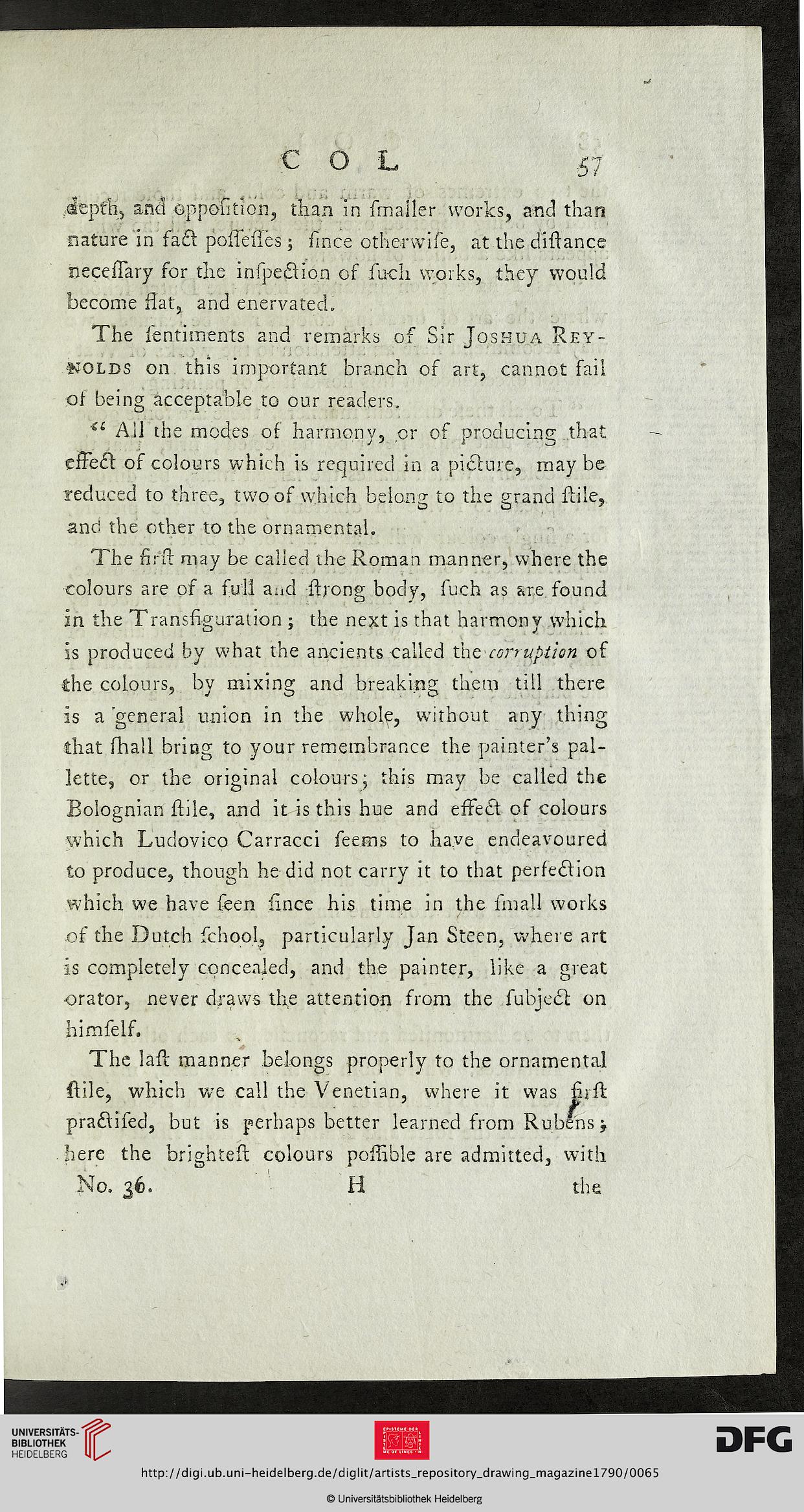COL 57
depth, and oppofition, than in fmailer works, and than
nature infact poffefies; fince othenvife, at the diftance
neceffary for the infpedion of fuch works, they would
become flat, and enervated.
The fentiments and remarks of Sir Joshua Rey-
nolds on this important branch of art, cannot fail
of being acceptable to our readers.
<l All the modes of harmony, or of producing that
effect of colours which is required in a picture, may be
reduced to three, two of which belong to the grand ftile,
and the other to the ornamental.
The fir ft may be called the Roman manner, where the
colours are of a full aad ftjong body, fuch as ^re found
in the Transfiguration ; the next is that harmony which
is produced by what the ancients called the corruption of
the colours, by mixing and breaking them till there
is a 'general union in the whole, without any thing
that fhall bring to your remembrance the painter's pal-
lette, or the original colours; this may be called the
Bolognian ftile, and it is this hue and effect of colours
which Ludovico Carracci feems to have endeavoured
to produce, though he did not carry it to that perfection
which we have feen fince his time in the fmall works
of the Dutch fchool, particularly Jan Steen, where art
is completely concealed, and the painter, like a great
orator, never draws the attention from the fubjeci on
himfelf.
The laft manner belongs properly to the ornamental
ftile, which we call the Venetian, where it was firft
pradtifed, but is perhaps better learned from Rubens;
here the brighteft colours poflible are admitted, with
No. 36. H the
depth, and oppofition, than in fmailer works, and than
nature infact poffefies; fince othenvife, at the diftance
neceffary for the infpedion of fuch works, they would
become flat, and enervated.
The fentiments and remarks of Sir Joshua Rey-
nolds on this important branch of art, cannot fail
of being acceptable to our readers.
<l All the modes of harmony, or of producing that
effect of colours which is required in a picture, may be
reduced to three, two of which belong to the grand ftile,
and the other to the ornamental.
The fir ft may be called the Roman manner, where the
colours are of a full aad ftjong body, fuch as ^re found
in the Transfiguration ; the next is that harmony which
is produced by what the ancients called the corruption of
the colours, by mixing and breaking them till there
is a 'general union in the whole, without any thing
that fhall bring to your remembrance the painter's pal-
lette, or the original colours; this may be called the
Bolognian ftile, and it is this hue and effect of colours
which Ludovico Carracci feems to have endeavoured
to produce, though he did not carry it to that perfection
which we have feen fince his time in the fmall works
of the Dutch fchool, particularly Jan Steen, where art
is completely concealed, and the painter, like a great
orator, never draws the attention from the fubjeci on
himfelf.
The laft manner belongs properly to the ornamental
ftile, which we call the Venetian, where it was firft
pradtifed, but is perhaps better learned from Rubens;
here the brighteft colours poflible are admitted, with
No. 36. H the




